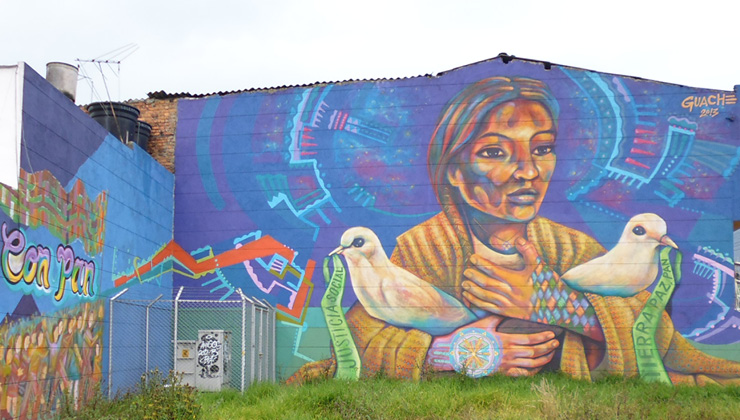Manisha Sarade looks at the gendered dimensions and consequences of the conflict in the Nagorno Karabakh region, and how existing social and political structures are compounded by the conflict and patriarchal politics amidst reports of gender-based violence. In this context, women’s participation in peace talks is absolutely necessary if the region is to achieve a sustainable peace.
It has been three decades since the first ethnic and territorial confrontations took place in the Nagorno Karabakh region, and the tally of victims and deaths has been countless for both sides of this unresolved tension – Armenia and Azerbaijan. The issue dates back to 1920, when the Nagorno-Karabakh autonomous region was instituted within Azerbaijan by the then Soviet Union.
In 1988, Nagorno-Karabakh legislature adopted a resolution that aimed to join Armenia despite the region’s legal location within Azerbaijan’s borders. In 1991, the autonomous region formally acknowledged that it would not join either of the countries after a referendum for independence. The referendum was accepted by 99.98% of voters. It was rejected by the region’s Azeri population, which then comprised 20% of its population. War broke out between Armenia and Azerbaijan over the region, leaving thousands of fatalities and refugees.
In 1994, Russia mediated a cease-fire which has been in place since. In recent times, the region was mainly distressed because of violent dispute between the two countries, which was known as the “Four Day War”. In addition to this, recurrent ceasefire violations between Azerbaijani and Armenian troops have led to thousands of deaths in the past decade.
It is important to view the gendered dimensions and consequences of this conflict. Women’s experiences of and vulnerability in conflict is shaped by patriarchal, cultural, social and political causes. Women do not have the same resources, authority and political rights to meet their personal needs or control their environments compared to men. Even in the case of the Nagorno Karabakh conflict, the history of the war is primarily understood through male politics, while the perspectives and voices of women in the war are censored.
A gender lens throws light on the social aspects and implications of the narratives that shape women’s lives amidst the conflict. The impact of armed conflict on women and girls in the region, means that current institutional arrangements to guarantee women’s protection and participation in peace processes could, appropriately applied, meaningfully add to the maintenance and promotion of international peace and security. The fact that even after three decades of the Nagorno Karabakh dispute, the number of women representatives, witnesses and peacebuilders in Armenia and Azerbaijan remains astoundingly low, speaks volumes for the conditions of women and their rights in the region.
In cultural terms, women are considered a central part of the dominant nationalism narrative in the Caucasus. The armed context makes this role even more noticeable in the regions of Azerbaijan and Armenia. In Armenian society, women are seen as soldier-making apparatuses. For example, at social gatherings there is a unique toast to the hostess of the family for raising good sons and good future mothers of the soldiers. This culture is being repeated in the region as it is passed down through each generation. Those who do not support or follow this culture are often considered to be anti-Armenians.
The fact that even after three decades of the Nagorno Karabakh dispute, the number of women representatives, witnesses and peacebuilders in Armenia and Azerbaijan remains astoundingly low, speaks volumes for the conditions of women and their rights in the region.
In mixed Armenian-Azerbaijani families – that were able to stay together in one region by altering surnames and concealing their identities – if a woman is not “reproducing” the members of the nation they are deprived of a sense of national identity and esteem – they are not considered patriotic. Therefore, the reproductive function of women advances the “people in power” discourse, which perceives expansion of the population as the prime interest of nations.
To elaborate, this discourse aims at preserving and expanding the population of the nation as crucial for the national interest. It aims to maintain a restricted “genetic pool”, where one needs to be born within the geographical boundaries of the nation to become a part of it. As a result, marriage, reproduction and sexuality are regulated within this geographically defined area.
In the male-controlled arrangement, women’s inferior position hints towards the full vertical control over their social and economic functioning, dignity, morals, sexuality and choices, by the family and the social order. There are various directions to show how this approach contributes to women’s subjugation in times of war. As per the data collected in research for a World Bank Report (based on Azerbaijan and Georgia), less than 9% of respondents stated they would want a girl if they were to have only one child. The perpetuation of patrilineage and the protection of the family’s social position becomes an important factor for son preference.
To illustrate, the South Caucasus region has been termed as a “male-dominated region” according to statistics from the UN Population Fund. In relation to gender-biased sex selection at birth, Armenia and Azerbaijan share top positions. According to Armenians and Azerbaijanis, the subject of son preference is a challenging concern and a form of discrimination in both nations.
There are important gendered dynamics of the dispute, such as the sexual division of the fighters and war victims – raped, murdered, incarcerated and migrants. Although it is little investigated, Armenians and Azerbaijanis have reported violence, ill treatment and sexual harassment performed by State agents against women since the commencement of the conflict. In the Nagorno-Karabakh conflict, molestation as a gender specific tool of warfare has been frequently used against enemies for mortification and vengeance. It has been used exclusively against women, for violating their symbolic worth which, as discussed above, they carry for their nations. This issue is extensively used for national mobilisation.
Although it is little investigated, Armenians and Azerbaijanis have reported violence, ill treatment and sexual harassment performed by State agents against women since the commencement of the conflict.
One of the most direct outcomes of the war is humanitarian and financial crises, which impacts not only communities that have been directly influenced by the conflict (residing in the Nagorno Karabakh region), but larger populations of the disputing nations in Azerbaijan and Armenia. Particularly susceptible during these times are refugees and Internationally Displaced Persons (IDPs) who are deprived their households, assets and sources of income. This is more visible in the war zone and in adjoining villages, where the tension of the conflict and militarism has become commonplace.
In this setting, most men are deputed in military activities, thus parting from their families, perhaps without any suitable monetary and physical support. In these circumstances, the normative role of a woman as caretaker and household-worker is stretched in various directions, and occasionally women become the only guardian and wage earner for their families. Women are left unaided and are required to take charge of various duties, including caring roles for children and elderly, earning income, providing shelter and food, for example.
The prevailing patriarchal politics and power relations in Armenia and Azerbaijan is nothing novel to be staggered about, however, the militarised circumstances affect the gendered power relations in different aspects of social and political life, and we can notice that the exploitation of women in these contexts grows in different forms in private as well as in the public realm. Introducing a gender lens into the war context and studying women’s positions in current developments would assist to understand alternate narratives different from dominant discourses.
Image credit: Armenian protest in Askeran, Nagorno-Karabakh, February 20, 1988. Flickr (CC BY-SA 4.0).
The views, thoughts and opinions expressed in this blog post are those of the author(s) only, and do not necessarily reflect LSE’s or those of the LSE Centre for Women, Peace and Security.






Very informative and Well phrased